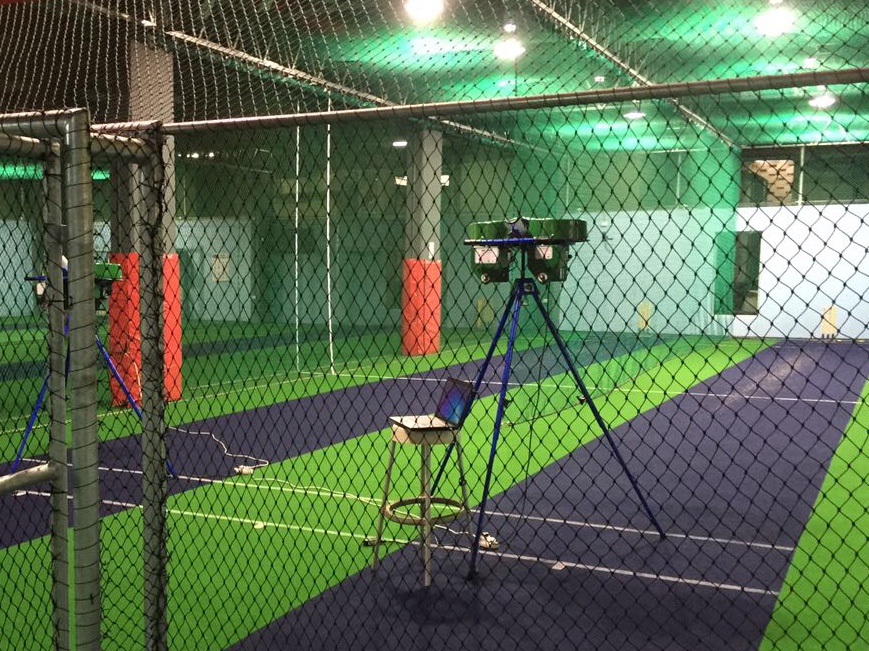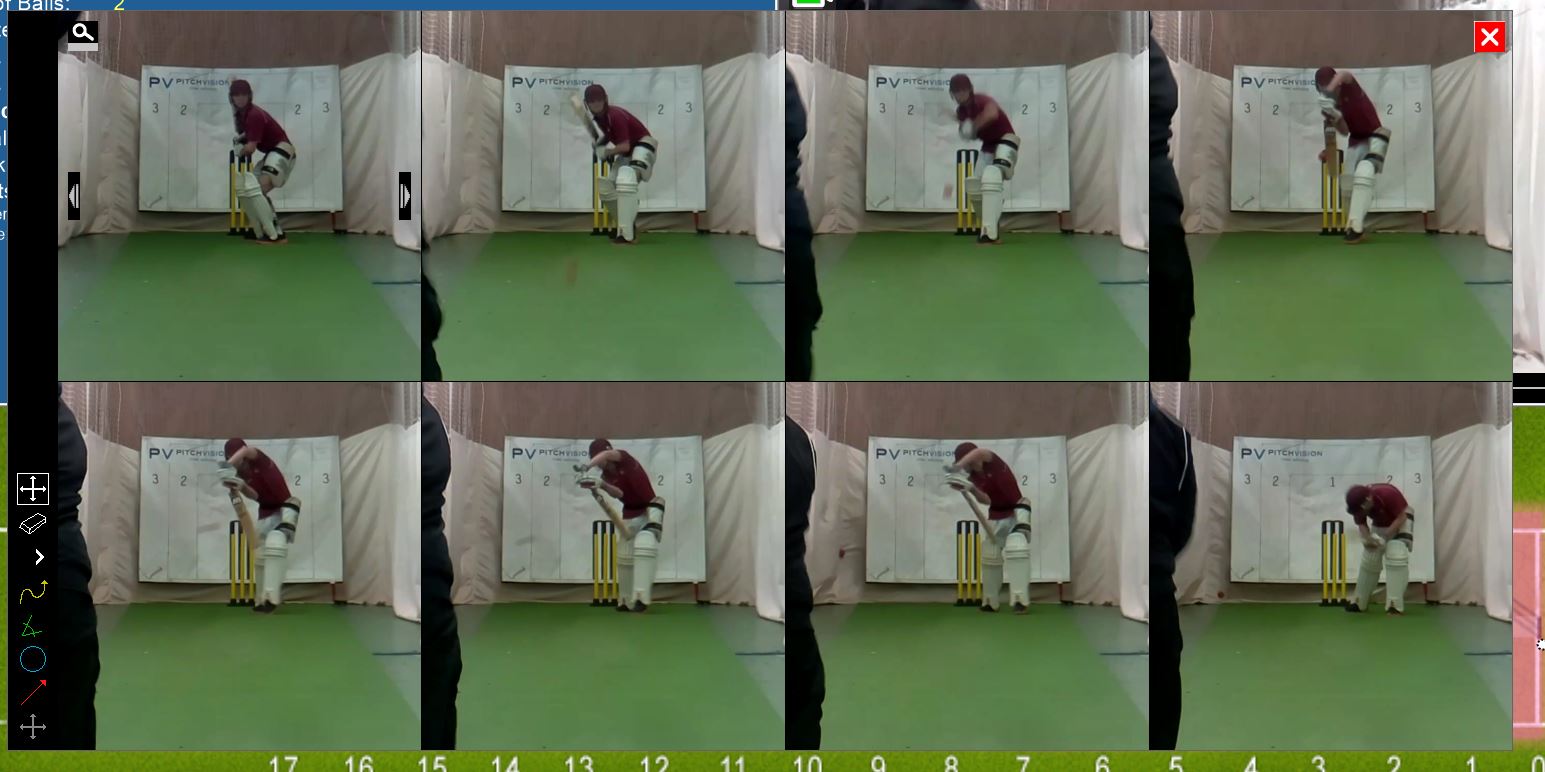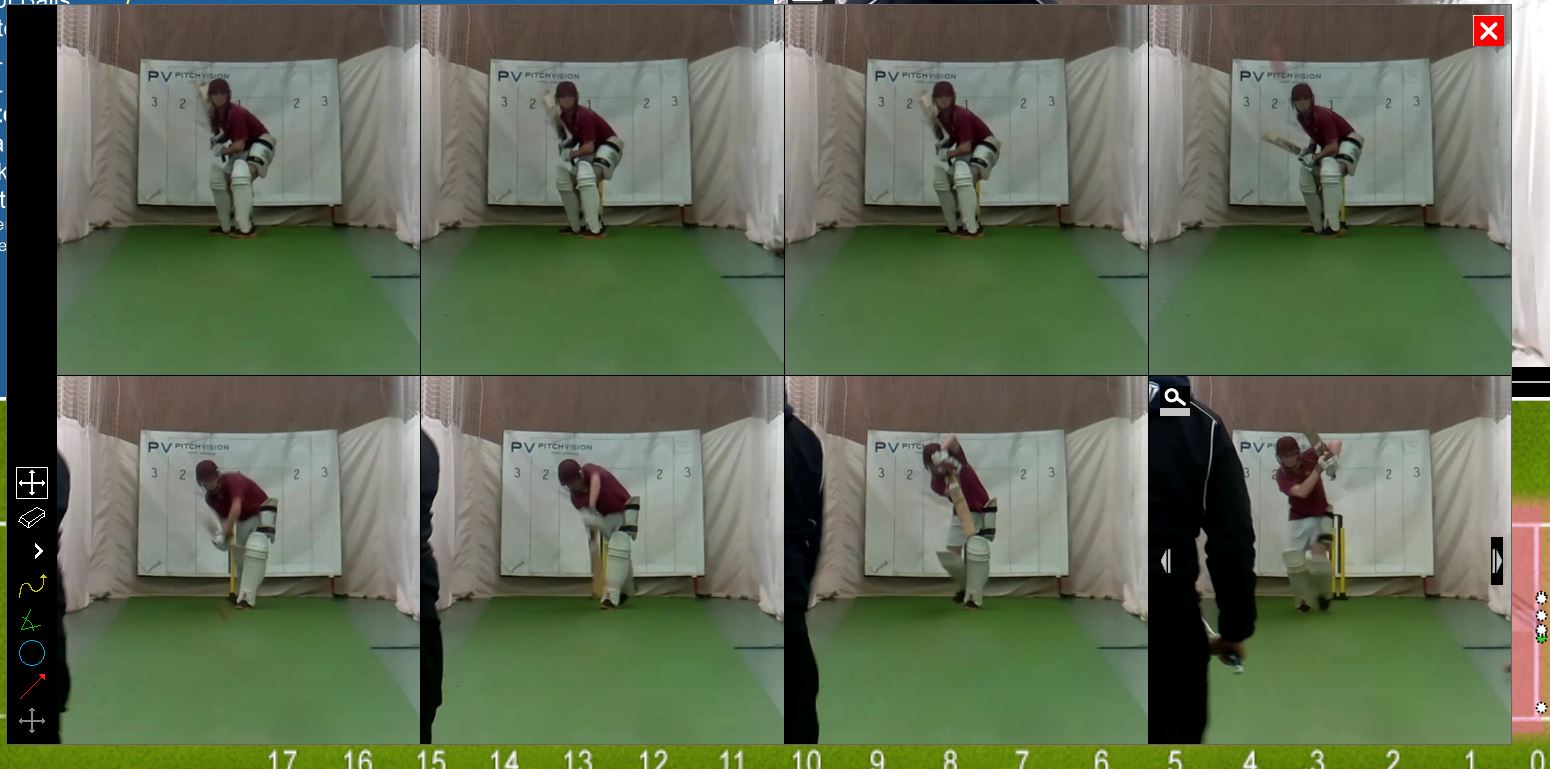Grow Your Cricket: Working Out Batting Technique
 You might have been told the best way to learn something is to work it out yourself. But how do you do that in a cricket net?
You might have been told the best way to learn something is to work it out yourself. But how do you do that in a cricket net?
I recently had a net session with a good batsman who was going through that exact dilemma. Here is how I, as coach, helped him work things out for himself.
The result, as you will see, was impressive and instant. The player went from playing poorly to confidently executing a plan.
Let’s see what happened.
A bad start
At the start of these practice session we set the goal of rotating the strike. As an opener, the batsman wanted some pace bowling so I got the sidearm thrower out to send down 65–70mph away swing bowling.
The batsman started his net with a focus on looking to hit the gaps.
However, it quickly became clear things were not going well.
His footwork was generally good, but his timing was off and he struggled to play balls from the stumps. These are usually his strong areas. He was beaten several time and edged a couple.
Analysing live
After about 20 minutes, I noticed contacts were gradually getting worse: Well past the time it takes him to “get his eye in”.
Even worse than this, he was going into his shell, forgetting about working the ball into gaps and instead trying to survive.
We stopped the session for a moment and had a chat.
He told me he was feeling frustrated about the session so far. Nothing was clicking and he was searching for timing and making errors he usually did not make.
At first he thought he was just tired - which he was - but this was not enough of an explanation for me. So I followed up by asking about why he thought the tiredness was influencing his game so strongly.
I told him I saw he was playing much more to the leg side of the ball than usual. This batsman is normally very strong off his legs, but it looked like he was getting tied up.
He suggested he correct this by moving his stance across slightly and batting on middle and off.
Back to the best
When he made this self-directed change, suddenly things started to click together for him.
His drives were well timed. He was beaten far less. He started working balls into gaps that felt impossible before, especially off his pads.
He was still tired of course, but now his had worked out what happens when he is tired: he tends to stay a little too leg side of the ball to be effective.
He also recognised his mental state is different when he is tired, and how this influences his game. He gets frustrated more quickly and often settles on an explaination he has no control over (I’m tired, I’m out of form, I have lost my skills). Once he is in this state of mind, he goes into his shell and bats too defensively, hoping to survive rather than dominate.
As we saw though, he had complete control and didn’t need to think any of those things!
So - through his self-analysis with a little pointer from the coach - now he knows what to look for when he is batting in a game and the same thing happens. he can reset his guard, reset his assumption about the form he is in and improve his chances of success through his natural game of fast scoring through strike rotation and hitting the bad ball for four.
The alternative view
Of course, the alternative view is that the coach, as the expert, should have told him to adjust his guard and stop playing so leg side. Would this have worked?
Perhaps it would.
But I am sure the player would not have learned something about the way he plays in the process. When he is in the middle he might remember to adjust his guard but still be in a fixed mindset because the coach is not there to reassure him.
Perhaps even then, his change leads to a good innings and he is thankful to the coach for such great advice.
But the trick that worked was exactly that to the batsman; a trick. Your coach bestowed magic upon you. You need your coach to do it again next time. It’s an external force working on your game.
In reality, the self-sufficient player knows they have all the answers inside. With the right mindset and self-knowledge they can succeed by their own technique and mindset, not that of the coach.
Naturally, this was only one example and is not proof a cricketer-centered approach, but hopefully it shows you that growing your own game works pretty well.
- Login to post comments



